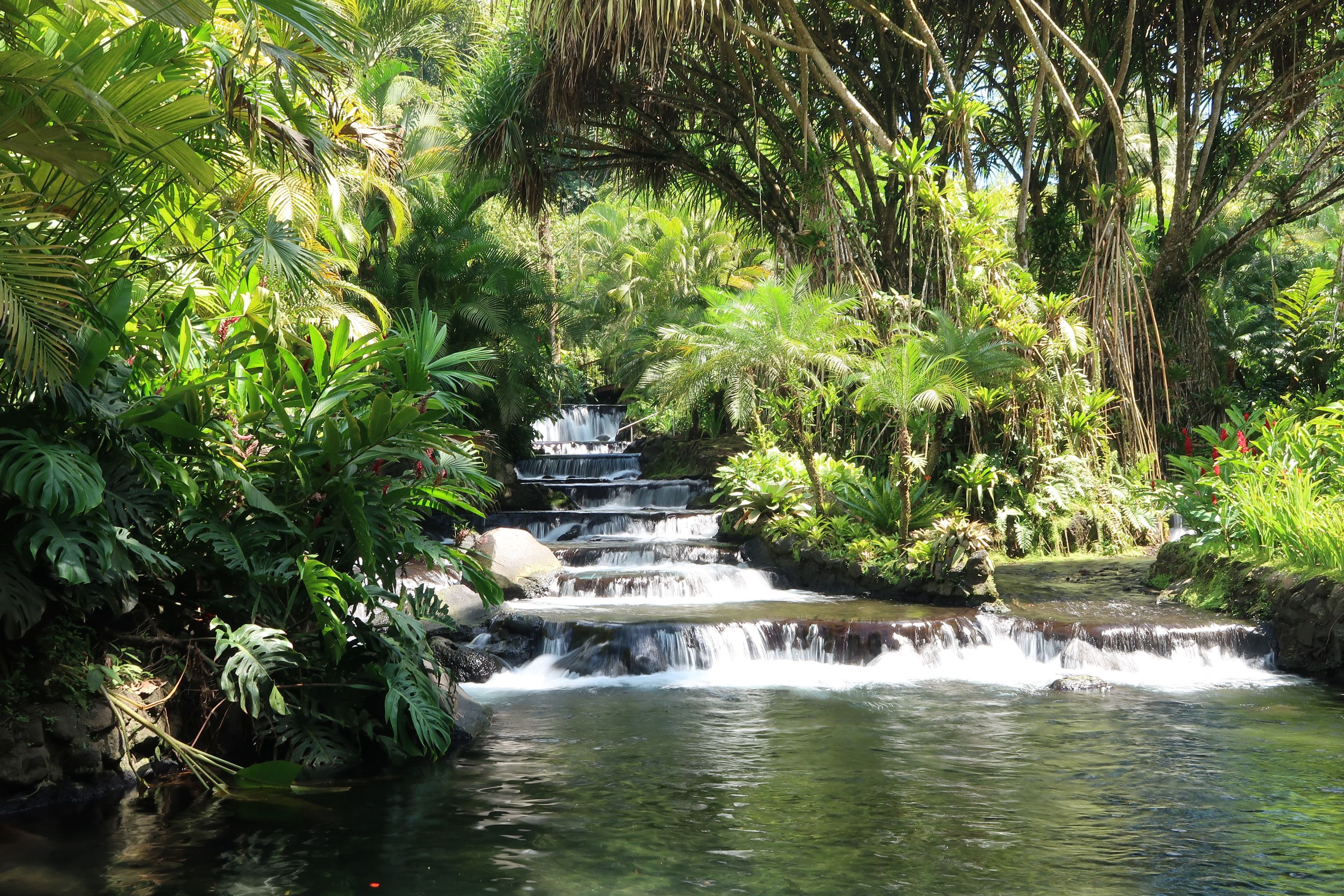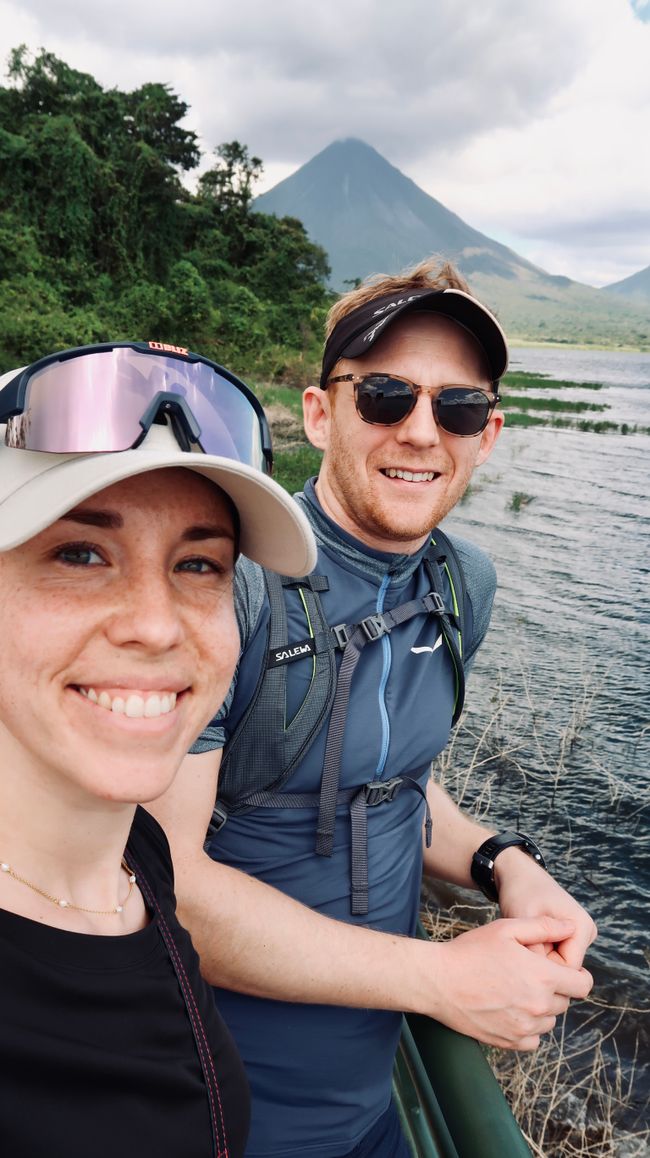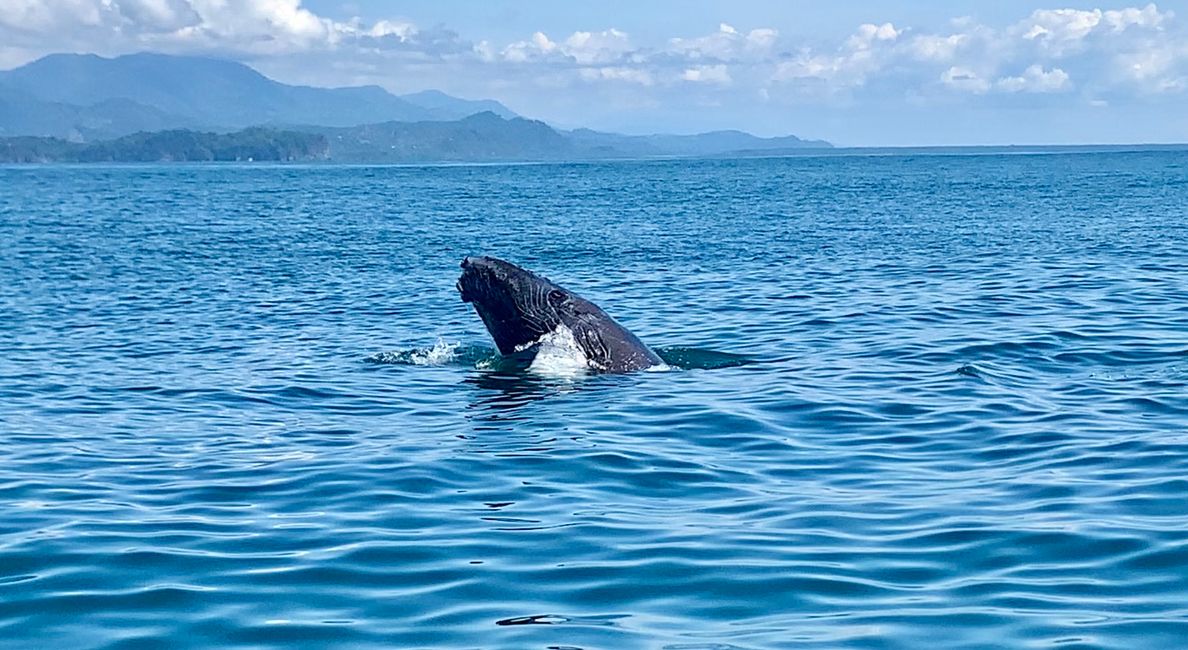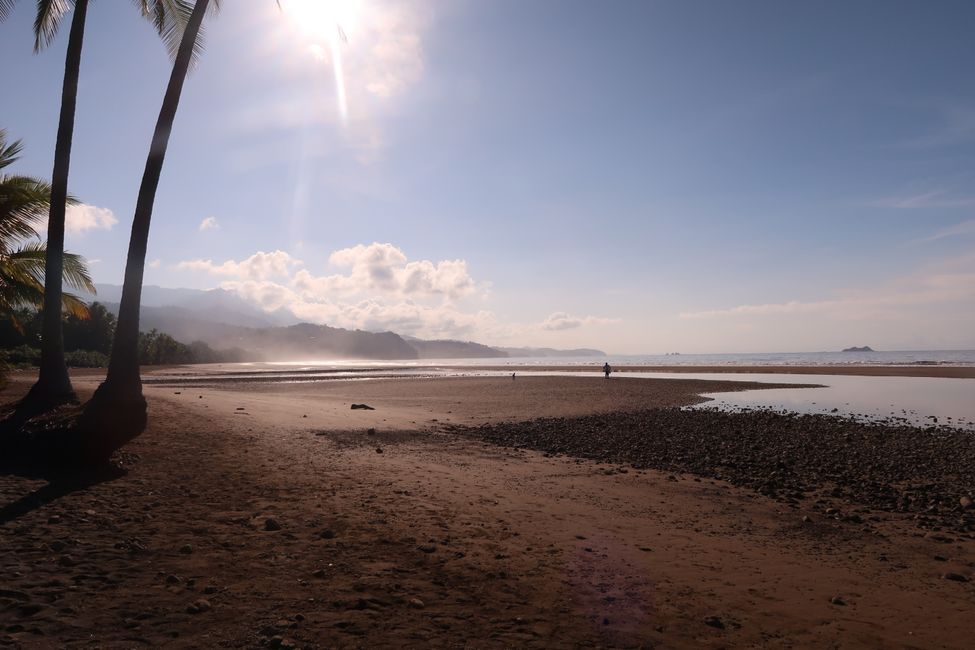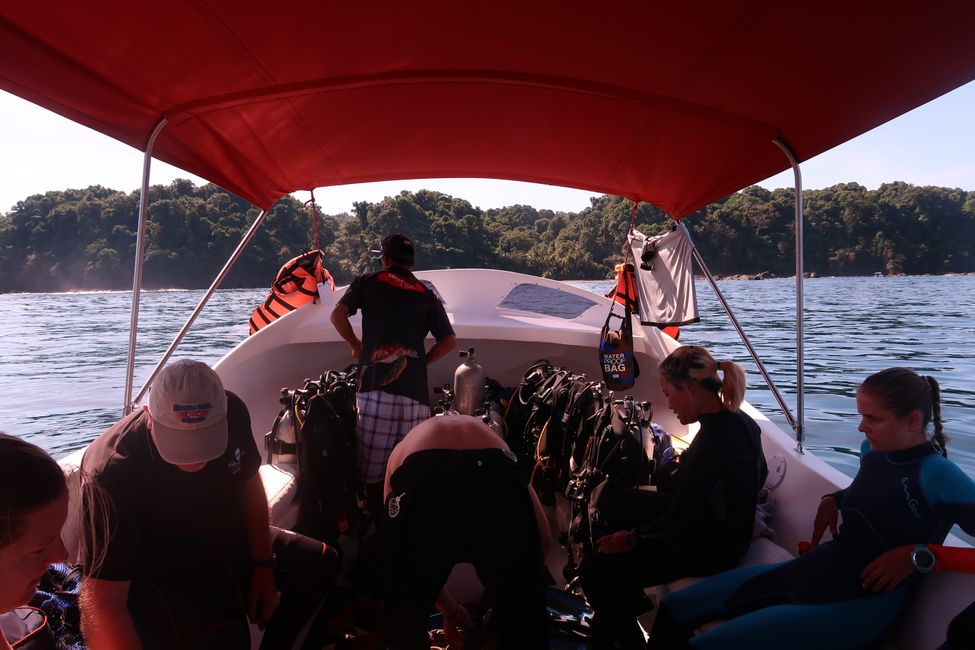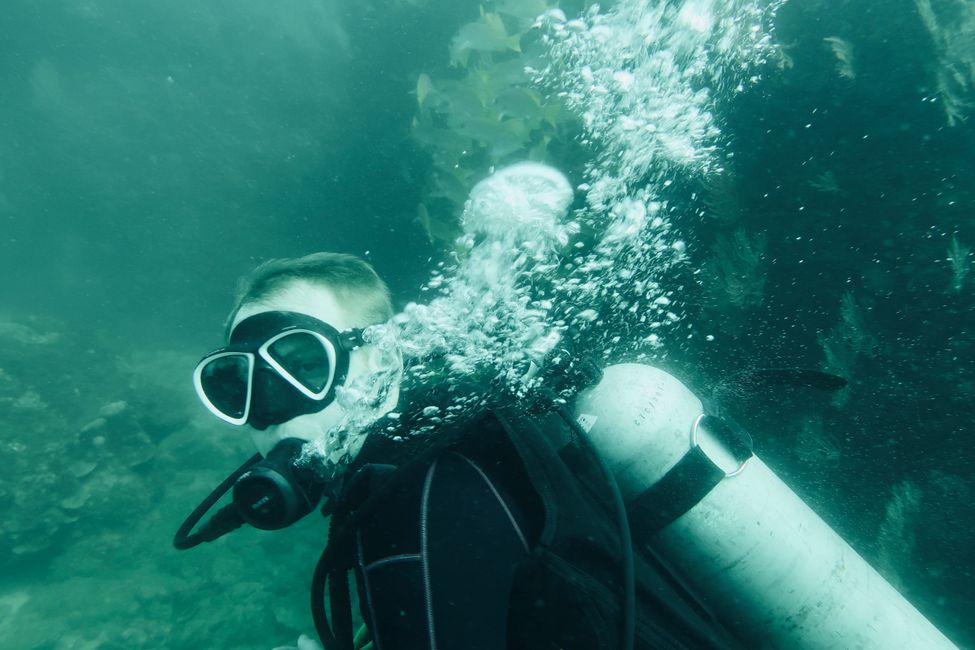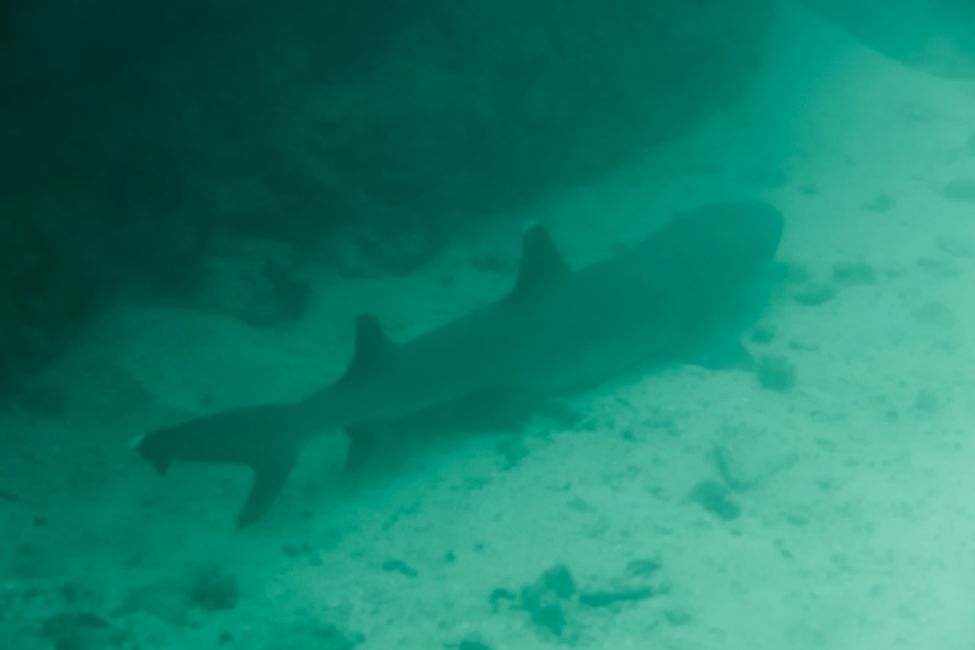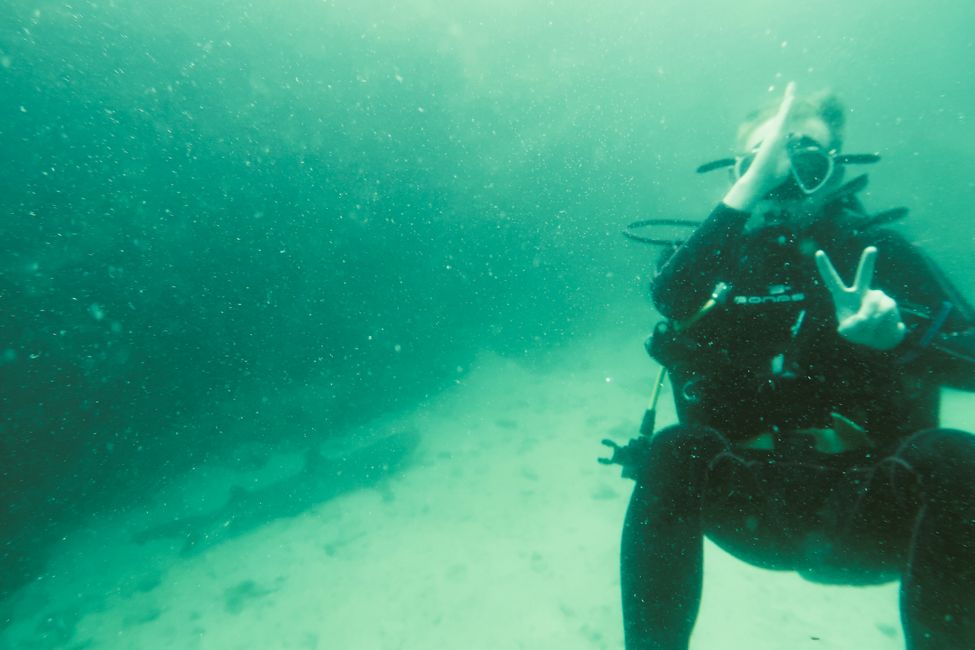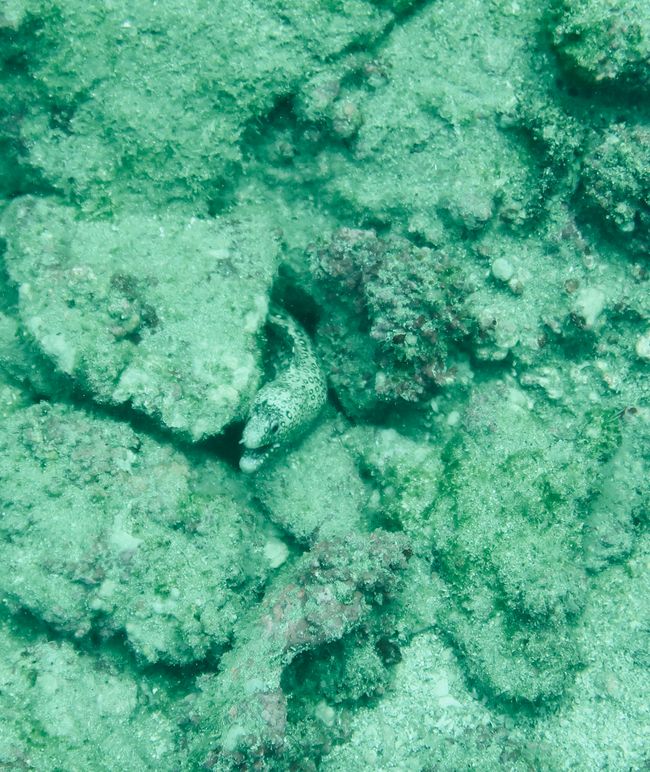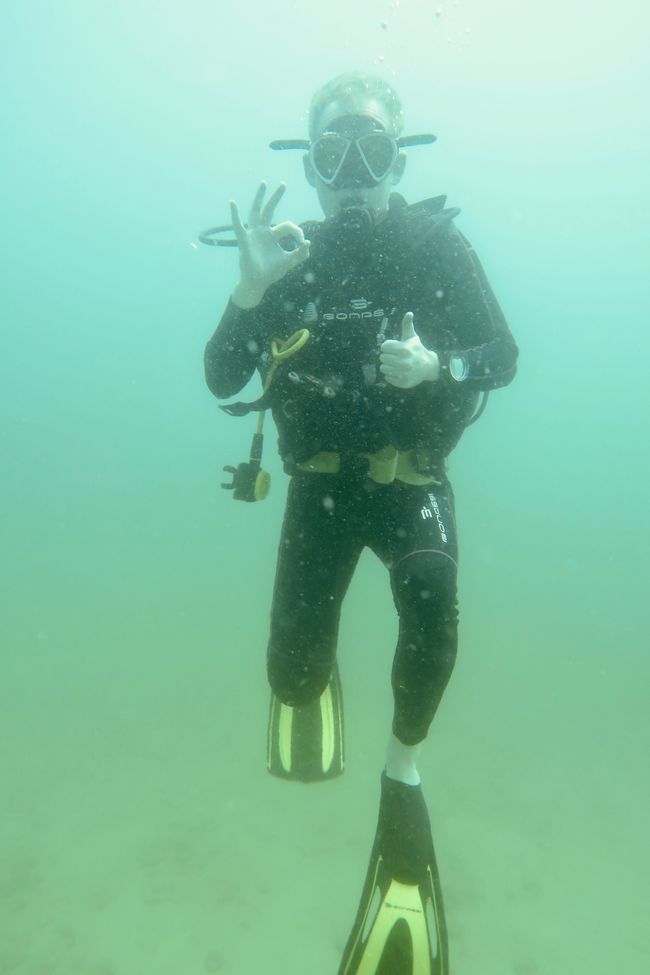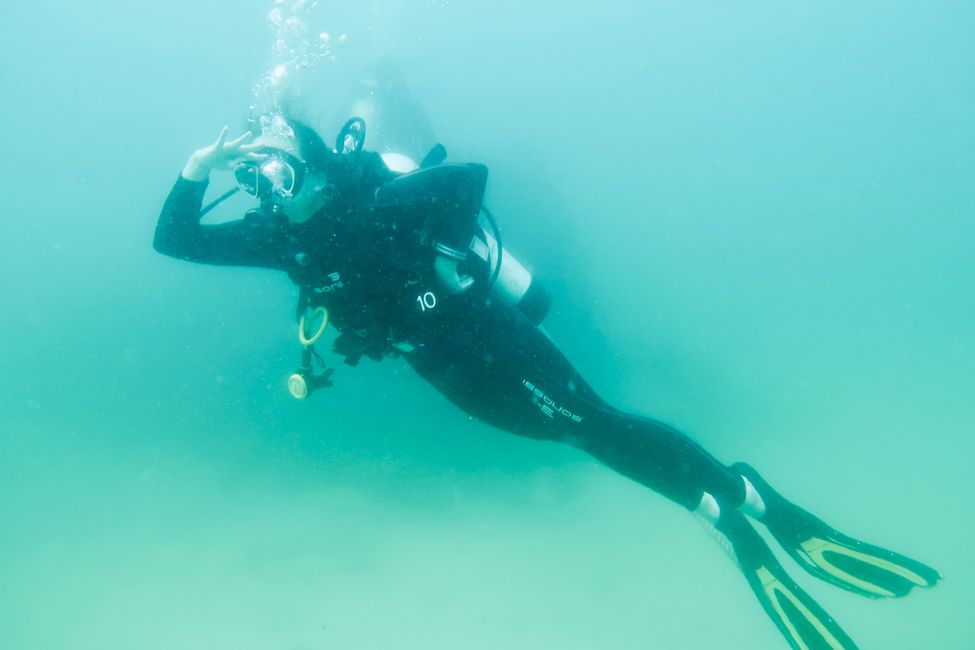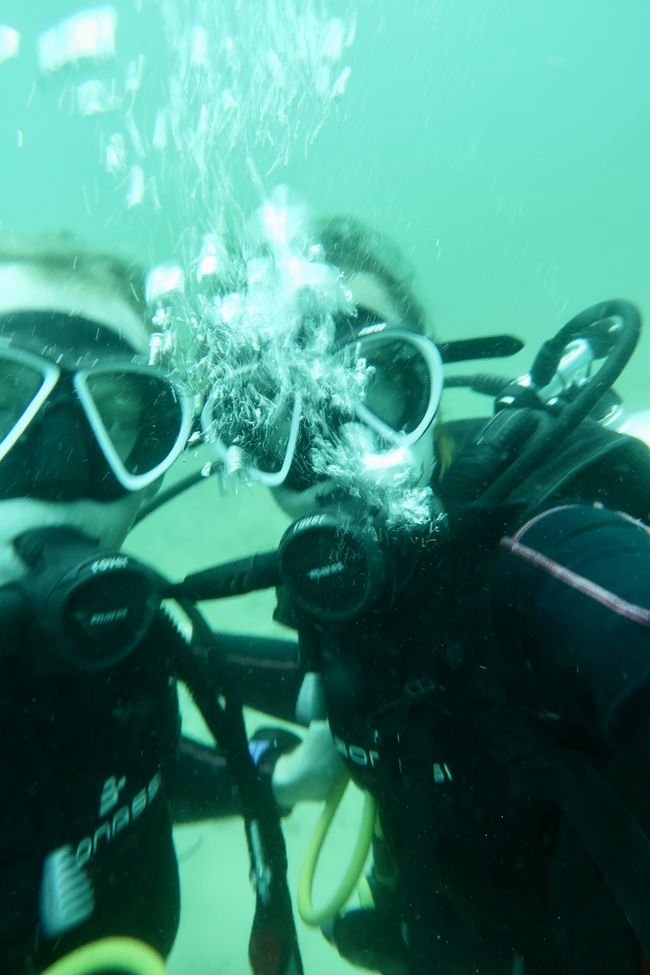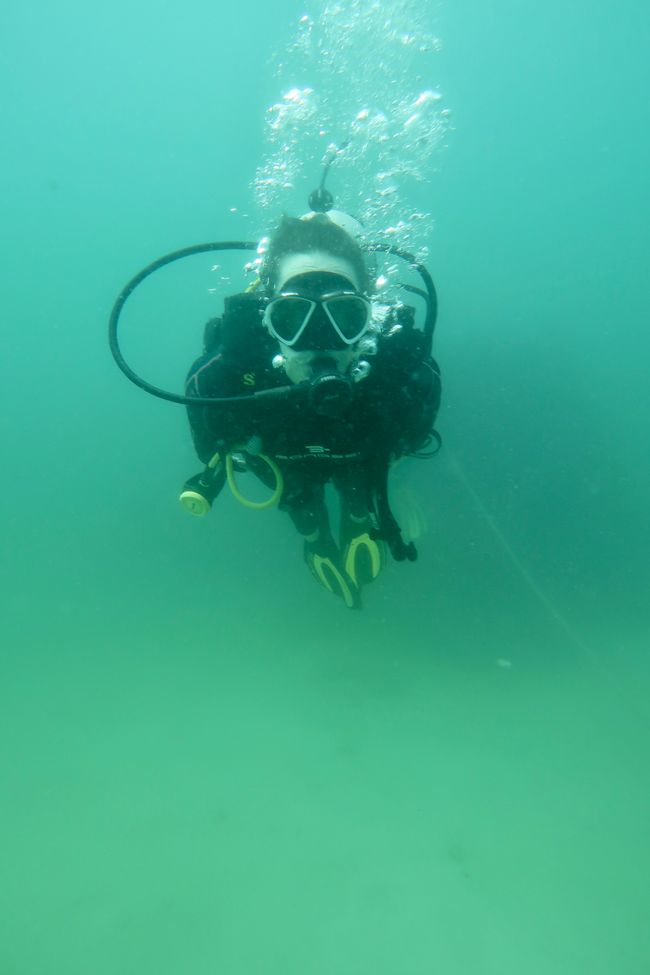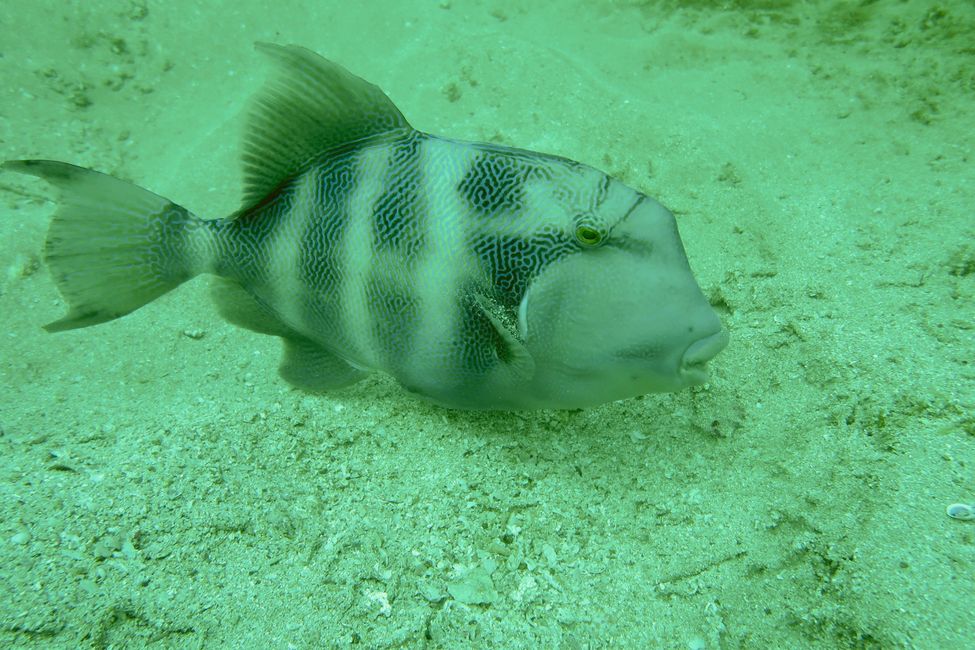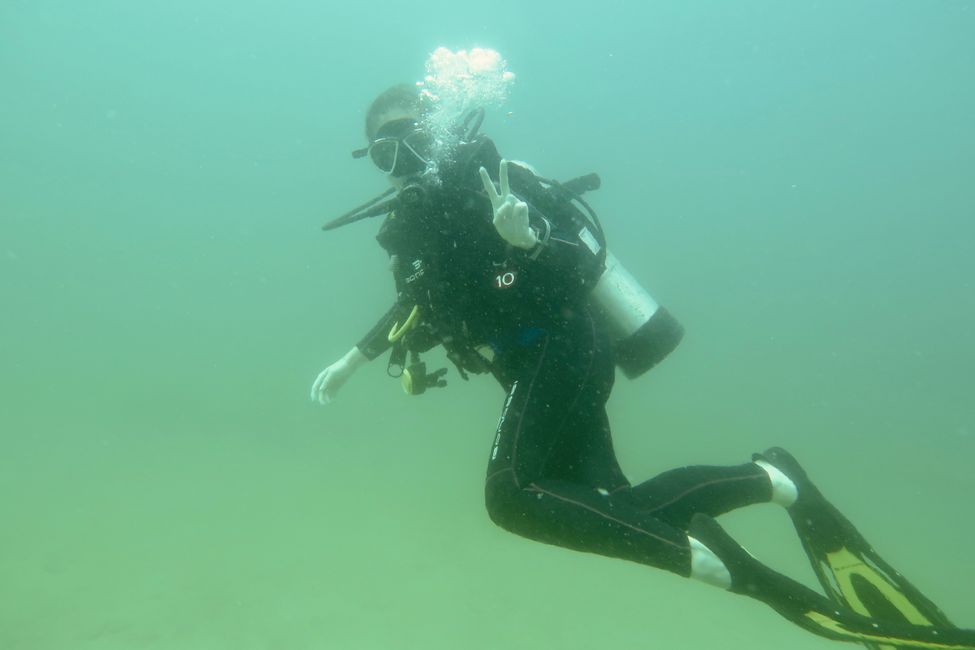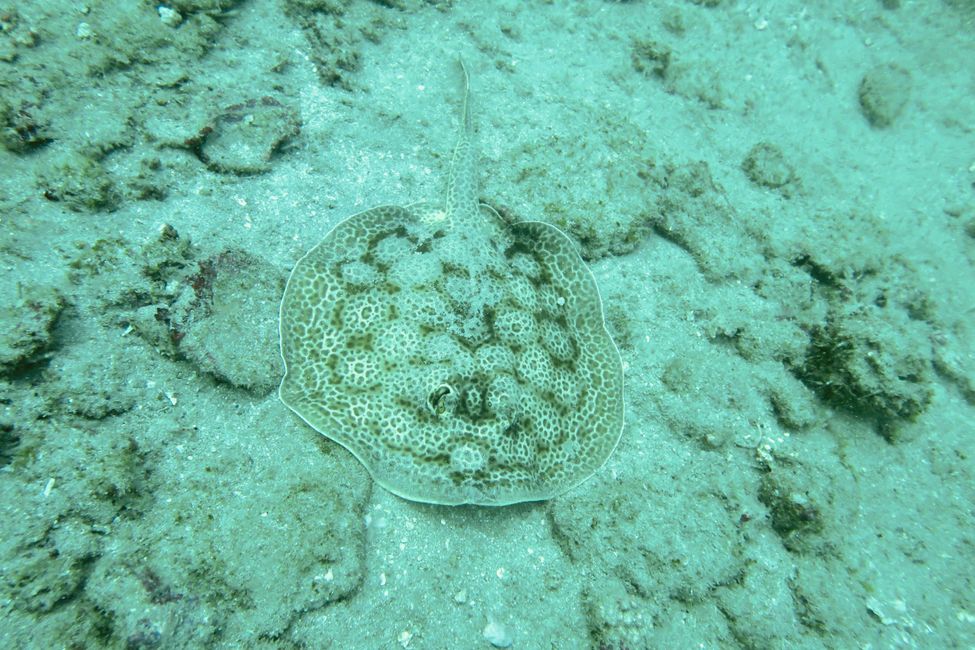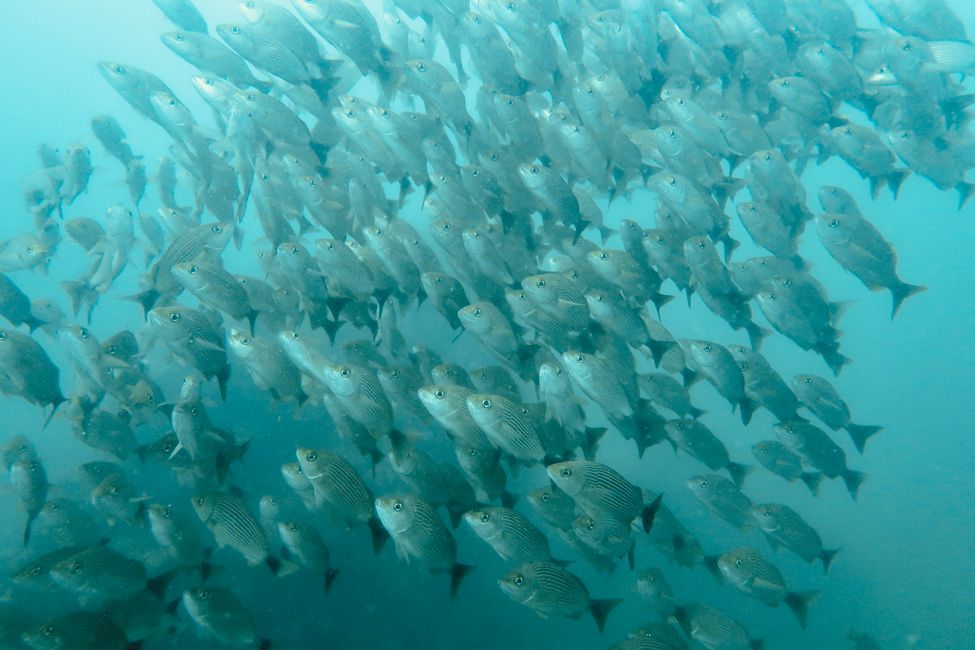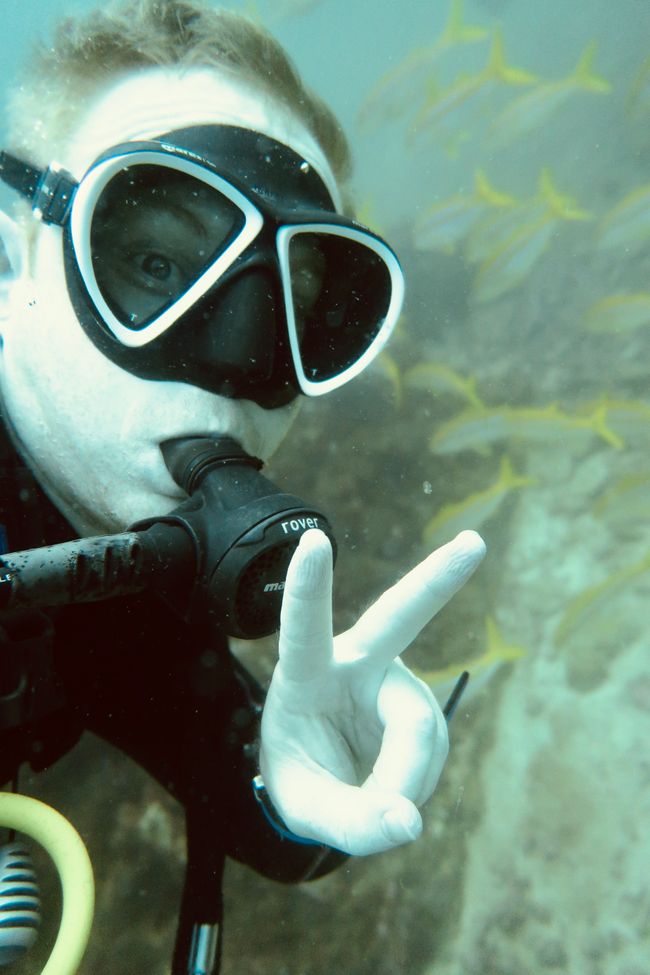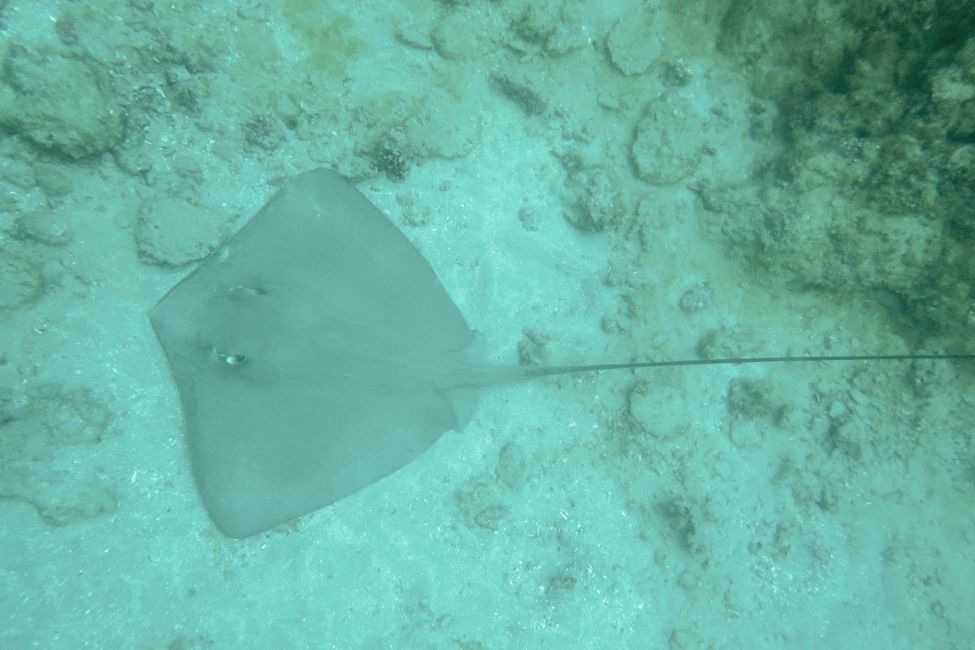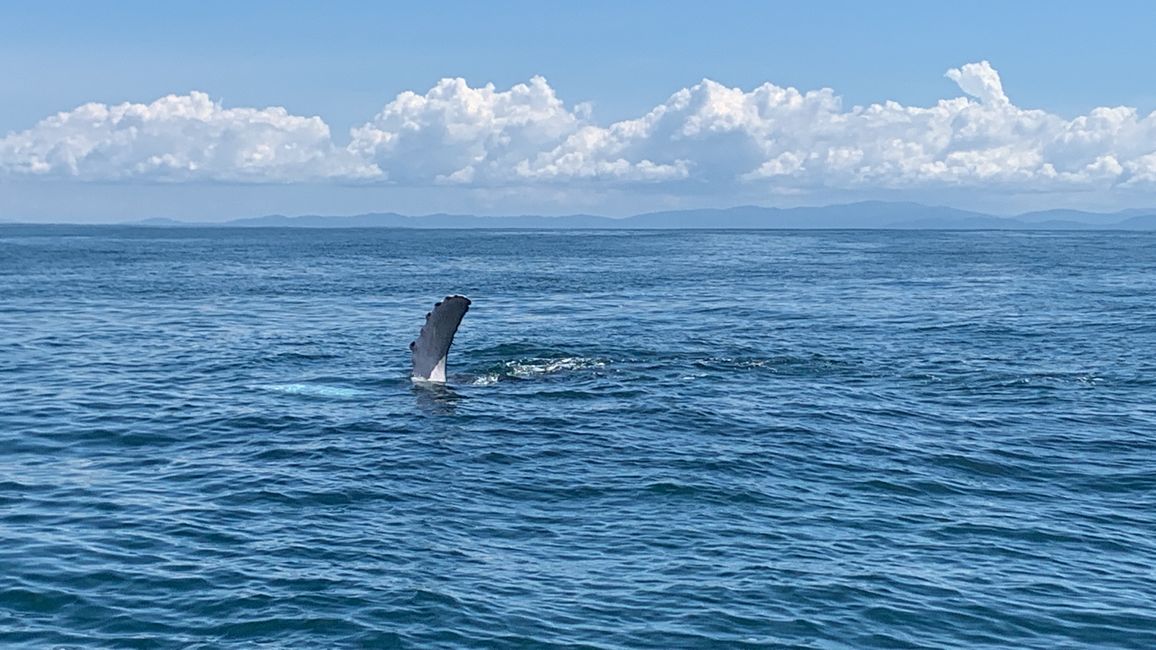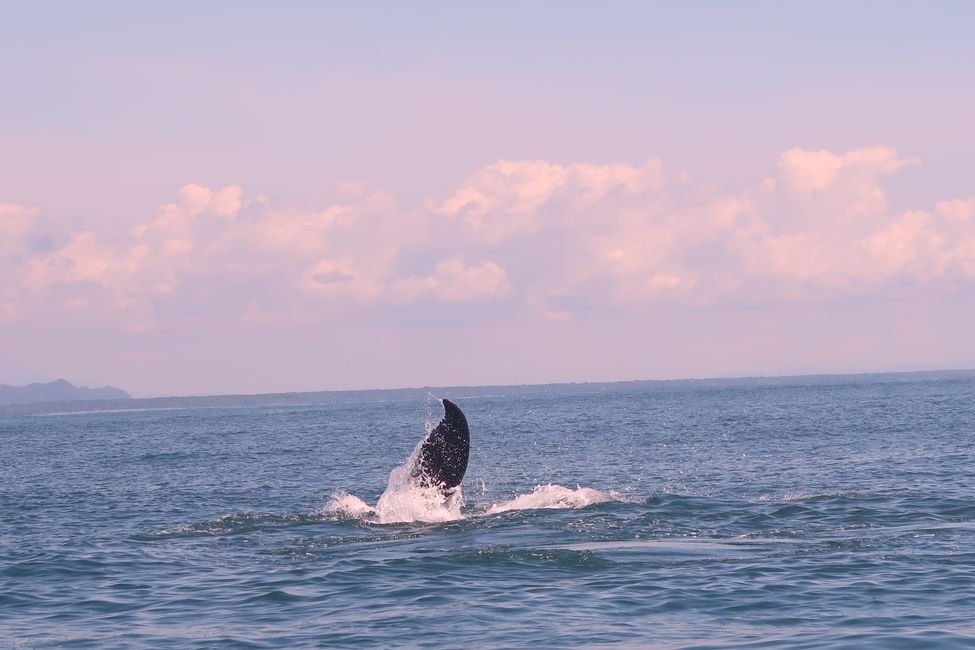Diving at Isla del Cano & Uvita (12.02.2022)
خپور شوی: 13.02.2022
خبر پاڼه کې ګډون وکړئ
6:20 am wake-up call, today we finally went diving again after the amazing dive days in Tamarindo. Tired but motivated, we walked to our diving school (Costa Rica Dive&Surf). At 07:00, we started by getting our equipment ready and we were positively surprised by the efficient organization on site. In a short time, we had everything together and could indulge in banana cake and coffee, while a total of 3 groups (including 18 American students who wanted to snorkel) were ready.
In a single file, we then walked to the entrance of Marino Balleno National Park. After washing our hands in line (which is taken as seriously as 2G checks in Austria), we walked along the beautiful beach to the boats. We had direct entry from the sea, which was not easy with the waves, but provided some action in the morning. Everything went well and we headed off with the speedboat for about 60 minutes towards Isla del Cano, one of the most famous dive spots in Costa Rica, about 54 kilometers from the beach. In total, we were a group of 8 divers, 2 guides, and 3 crew members.
After a short stop because we spotted a large turtle in the sea and of course had to take pictures, we almost arrived on the coast of the island on time. Not surprisingly, we were not the only boat there, especially with the many snorkelers, it was quite crowded in the early hours. Our guide, AJ - an American from the US, my tip Colorado - gave a short briefing and thanks to the help of the competent crew, we were in the water relatively quickly. Due to the strong current, we were ordered to descend using the buoy rope.
One of the few strange moments in my diving experience so far was a huge traffic jam of divers hanging on this rope. There seemed to be some beginner groups among them, so it took a while until we finally managed to descend. On the way down, our group (including 5 of us and the guide) lost a French companion who was too nervous and couldn't/wouldn't dive. He eventually went back to the boat.
We had a very enjoyable dive, the start was great, as we immediately had a majestic White Tip Shark in front of us. A eventful 46 minutes brought many good impressions and photos. Back on the boat, each of us received a melon-pineapple lunchbox as a snack. We managed the second dive with the whole group, and the guide already trusted us and sent us ahead again using the rope. This time, I was allowed to take photos with the camera for the first time on vacation, and my wife now calls me the "underwater paparazzi". We had some more highlights with rays and swarms of fish.
Before heading back to the mainland, we had lunch, rarely have we eaten so well on the boat. Vegetarian burritos and banana bread (I could eat only that) were served. Put on life vests, secure everything, it's time to go back, not suspecting that the biggest highlight of the day is still ahead of us. About 15 minutes before we arrive, suddenly a crew member shouts "stop - whale!"..
The next 15 minutes, everyone on board is fascinated and glued to the edge of the boat. Cameras, smartphones, and amazed faces (including the captain who also takes out his phone) observe a humpback whale swimming happily. According to the guides, it must be a very young animal. We can hardly believe our luck and watch the visibly happy whale dancing through the water. Videos can be found on our Instagram channels, we have included some pictures in the blog.
Back at the dive school, we pack our things and have a relaxing rest of the day. Shower, clean equipment, and sort out pictures and videos (there were a lot). Lie by the pool for a while, diving can really make you tired. After a short nap session, we drive to a Mexican restaurant in town and enjoy a cozy evening. Tomorrow, we have two more dives ahead, and after today, we're already looking forward to it.
The Daily Two:
Insight: It was not supposed to become an animal blog (after the sloth yesterday ;-)), but due to today's impressions, here are some facts about humpback whales:
- Adult whales can grow up to 17 meters long and weigh up to 36 tons.
- Their white, up to 5 meter long pectoral fins (the longest of all whales) make them easily recognizable.
- It takes almost a year for a calf to be born, and a "baby" already has a length of 4.5 meters and a weight of nearly 1 ton.
- Humpback whales are found along the coasts of Costa Rica and Panama only from mid-January to mid-March to mate and bear their young. They mainly inhabit cold waters (closer to the North and South Pole areas).
- Humpback whales are the greatest travelers = they cover the longest distances of all whale and dolphin species.
- A humpback whale can live up to 80 years and eat 1.3 tons of food daily.
- I'll stop there - for more information about whales, visit https://de.whales.org/wale-delfine/artenfuehrer/buckelwal/
Moment of happiness: Well, I think you can already guess it, the burrito for lunch... No, of course, the "baby" humpback whale with its mother and the amazing impressions and pictures of this spectacle.
خبر پاڼه کې ګډون وکړئ
ځواب (2)
Ursula
Ein wunderbares Erlebnis 🐳Ursula
Danke für die tollen Fotos!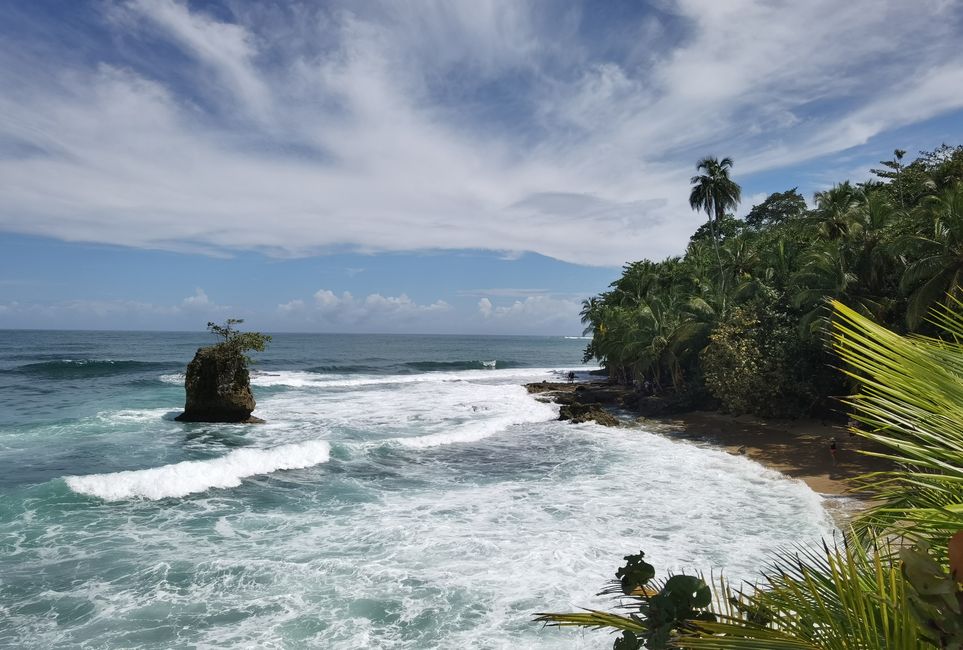
د سفر راپورونه کوسټاریکا
